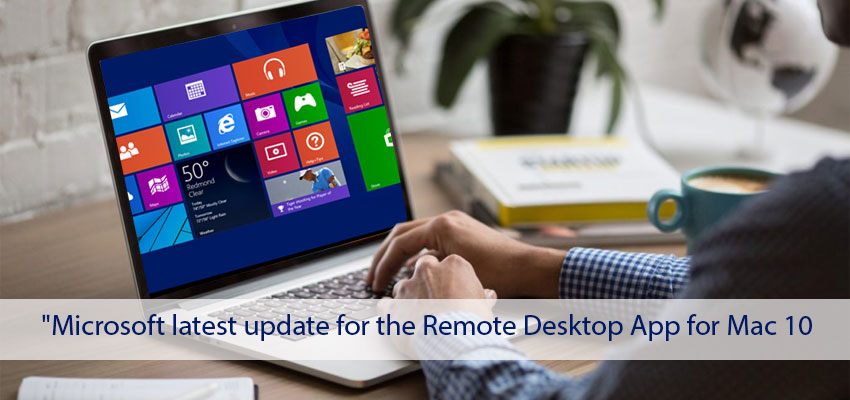Microsoft has silently curled out a major update for the Remote Desktop app for Mac 10, the update brings a new design as well as new features enabled in a remote session.The update Microsoft remote desktop app for mac 10 has made a few changes to its user interface.Microsoft mainly focused on making the app look modern.the new user interface regulates perfect with the design of the operating system.

Users can quickly connect to saved clients through using of flat thumbnails in the main window. Microsoft has continued the list of device redirection in the remote session. After the new update of the remote desktop app, it allows new device so users can now redirect the local microphone and smart cards, while previously they were only allowed to redirect a printer.
There is a catch though. After update, a Remote Desktop App Microsoft says that you can’t use a redirected smart card to sign into your remote Desktop and the redirected smart card is not available until after you sign in the Remote Desktop. Microsoft release a Latest update is support for Mac operating system shortcuts in a remote session, which is allowed hotkeys currently for cutting, copying, and pasting.
Use new device redirection in the remote session
When connecting to a personal computer or Server remotely you can redirect printers into a remote session. With the new remote desktop app.
Following additional devices can be enabled such as.
- The user can redirect the local microphone.
- A user can redirect smart cards.
- But you can’t use a redirected smart card to sign into your remote Desktop.
- The redirected smart card isn’t available until after you sign in your remote Desktop app.
Use of mac operating system shortcuts in a remote session
User can use the Remote Desktop app client for Mac to work with Windows apps, resources, and desktops from your Mac computer.
a user can now use the Mac operating system keyboard shortcuts to cut, copy,and paste in a remote session.
How to connect a Remote Desktop app connection
There is a following step to create a remote desktop connection…
1.Go to the Connection Center, click +, and then click Desktop.
2.After click Desktop enter the following information
- PC name – This can be a Windows computer name which is a found in a setting, a domain name, IP address. You can also add port information to the end of this name, like My Desktop:3389.
- User Account – Add the user account you use to access the remote PC. Use one of these formats: user_name, domain\user_name, or [email protected]. a user can also choose to require a password. When managing multiple user accounts with the same password, set a friendly name to differentiate the accounts. Manage your saved user accounts in the preferences of the app.
3.You can also set these optional settings for the connection:
- Set a friendly name
- 2.Add a Gateway
- Set the sound output
- Swap mouse buttons
- Enable Admin Mode
- Redirect local folders into a remote session
- Forward local printers
- Forward Smart Cards
4.Click Save
To start the connection, just double-click it. The same is true for remote resources.
How to migrate data from the previous version
- If you want to know how to migrate the data to this latest version from the previous version, Microsoft posted documentation on Enterprise mobility +Security blog.
- Before migrating the data from the previous version “Verify you have the latest version 8.0.43 installed to migrate your connection data”.
- Next step for Microsoft Remote Desktop in the App Store to download the new application on your Mac running OS X Yosemite or higher.when app installed on your Desktop you can skip the first run experience.
- Choose the option In the menu clicks connections to import connections from the other app, Now you are set to use the new app.
- While the redesigned user interface is the first thing you will notice, version 10 does come with noticeable performance improvements due to the inclusion of shortcuts
Advantage the new UI to manage and use multiple saved connection
Microsoft has made the following user interface improvements…
- In a new update a remote desktop app, users assign desktop connections to custom groups.
- After sign in the app, you can easily identify active connections in the connection center.
- Manage a single list of user accounts in the preferences of the remote desktop app.
- you can Store multiple entries of the same user name with different passwords in your remote desktop app.